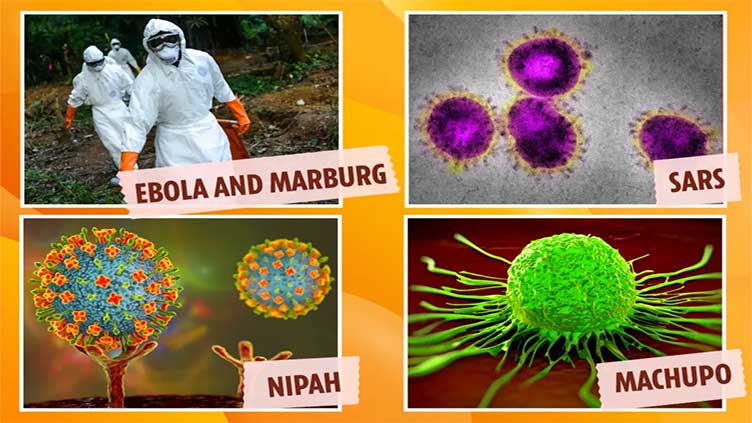Experts reveal 4 viruses that could trigger next pandemic – from brain-swelling 'flu' to an eye-bleeding fever

And where in the world these outbreaks are likely to begin
(Web Desk) - Whether it begins tomorrow, next month or in the next decade, another pandemic is looming.
Scientists can’t predict precisely when or how the outbreak might start - but they say it's likely to be soon.
Deaths from viruses that currently lurk in animals - half of which can spill into humans - are set to increase 12-fold by 2050, according to a new study published in the British Medical Journal.
Three bugs worrying the US scientists include Ebola and Marburg, SARS, and Nipah virus.
These viruses are on the World Health Organisation's (WHO) list of "priority diseases" that could be the source of the next pandemic.
But the Ebola-like Machupo virus should also be considered a threat, the authors of the new study argue.
Outbreaks of the four bugs have increased "at an exponential rate" from 1963 to 2019, which the authors found concerning.
We spoke to a health protection expert Professor Paul Hunter, from the University of East Anglia, to learn more about these viral threats and where they could come from.
EBOLA AND MARBURG: Ebola and Marburg are severe and highly infectious filoviruses that come from bats and kill many they infect.
There have been several large outbreaks of both infections in Africa over the last few years, Prof Hunter said, and both have the "potential to spread widely".
SARS: Severe acute respiratory syndrome (SARS) is a viral respiratory caused by the coronavirus, which also caused Covid-19.
Like other respiratory illnesses such as flu and the common cold, SARS affects the airways in the lungs.
Prof Paul said SARS, which is believed to be from bats, is the disease "most likely to cause another pandemic".
This is because it's so contagious.
It's passed on through respiratory droplets produced when a person with the virus coughs or sneezes, or by contact with objects or surfaces containing the virus.
SARS showed how quickly infection can spread during its first reported outbreak in Asia in February 2003.
NIPAH: Prof Hunter warned that Nipah, a virus that spreads from fruit bats or livestock, could also be the next pandemic.
The bug - which inspired the blockbuster film Contagion about a global pandemic - attacks the brain, causing it to swell and has a fatality rate up to 75 per cent.
Of those who survive it, around 20 per cent are left with long-term neurological conditions, including personality changes or seizure disorders.
It was first identified in pigs in Malaysia and Singapore in the late 1980s, though it originally came from fruit bats.
MACHUPO: Also known as “black typhus” and Bolivian hemorrhagic fever, Machupo was first discovered in Bolivia in 1959.
It comes from rodents, specifically a mouse found in Bolivia, which Prof Hunter said could be how it becomes pandemic.
"Human-to-human transmission is thought to be rare, but a pandemic may occur if the virus starts spreading in rodents globally," Prof Hunter said.
The symptoms of which are Ebola-like and include bleeding, high fever, pain, and rapid death.


